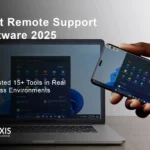Most people assume that reputation management is just about fixing bad reviews or responding to unhappy customers. While that’s part of it, effective reputation management goes far beyond damage control. The most successful brands use proactive strategies—often behind the scenes—that quietly shape how they are perceived.
Let’s break down some of the lesser-discussed tactics.
1. Using SEO as a Reputation Shield
Search engine optimization isn’t just about selling products. Controlling what appears when people search for your brand name is one of the most powerful forms of reputation management.
By ensuring positive content ranks highly—blog posts, thought leadership articles, press mentions—you can push less favorable results further down the page. This often requires heavy investment in content creation, SEO strategy, and partnerships, but the payoff is that potential customers primarily see trustworthy and positive stories about your business.
2. Burying Negativity with Content Flooding
When damaging or outdated information surfaces online, one advanced tactic is to outweigh it with stronger, fresher content. This means creating and promoting blog posts, press releases, case studies, employee interviews, or community initiatives.
Some brands even leverage platform mechanics to amplify positive signals—similar to how marketers might use tools to buy YouTube subscribers or boost engagement with likes and shares. While such tactics should be handled carefully, the principle is the same: more visibility for positive narratives means less attention for negative ones.
3. Silence and Smart Timing
Responding instantly to every complaint can backfire. Sometimes silence—or a measured delay—is more effective.
- If the criticism is minor or clearly unfair, addressing it may reignite conflict.
- For serious issues, waiting too long creates mistrust.
The balance is in knowing when to respond quickly, when to pause, and when to let a situation fade on its own.
4. Proactively Shaping the Narrative
Too often, companies only communicate when there’s a crisis. Proactive reputation management means telling your own story before others do.
This can include publishing thought leadership articles, highlighting corporate social responsibility initiatives, or showcasing employee experiences. Instead of constantly fighting negative perceptions, you’re actively building positive ones.
5. Turning Employees into Advocates
Employees are the most overlooked ambassadors of reputation. A satisfied, supported workforce naturally shares positive experiences with friends, family, and online communities.
But disgruntled employees do the opposite—potentially causing long-term damage. Investing in a healthy workplace culture pays off in authentic reputation building, especially on platforms like Glassdoor or LinkedIn.
6. Media and Influencer Relations
Reputation isn’t only shaped by customers—it’s also shaped by who tells your story in the press and online communities. Building strong relationships with industry journalists, analysts, and bloggers provides opportunities for positive coverage that reinforces credibility.
Instead of a defensive stance, this is about long-term reputation architecture, where trusted voices outside your organization help shape public opinion.
Conclusión
Reputation management is more than firefighting—it’s a proactive system. From SEO strategies that secure brand visibility to employee advocacy and media engagement, companies that invest in long-term tactics are better positioned to control their narrative.
And while methods like using visibility tools (e.g., boosting engagement or even opting to buy YouTube subscribers for a temporary lift) can amplify signals, the foundation of reputation will always rest on consistent authenticity, transparency, and proactive storytelling.





